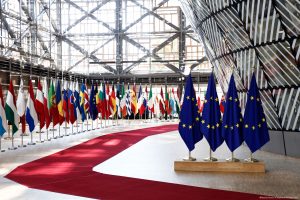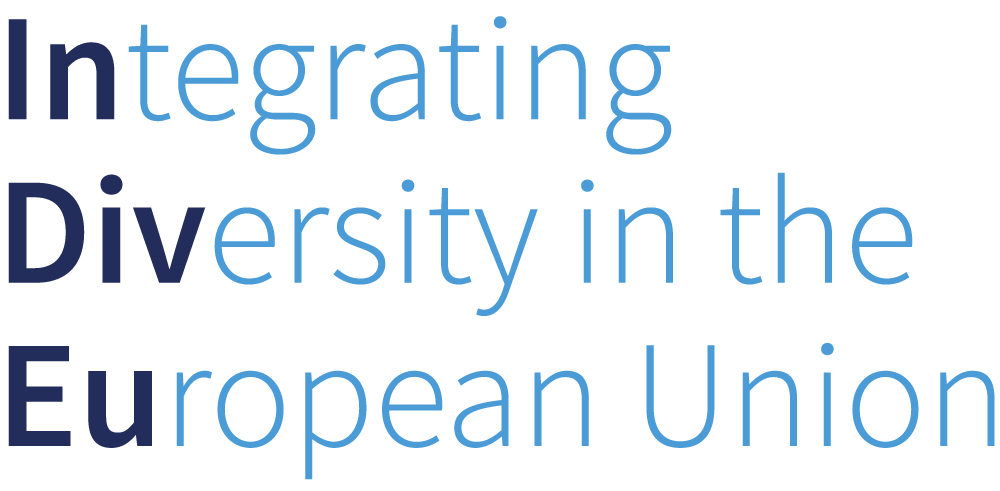This section of the Integrating Diversity in the European Union (InDivEU) website provides a list of all editorials included in the bi-annual project bulletin.
Differentiated Integration: Do the member states care and what do they want?
Stefan Telle, European University Institute
 Research on differentiated integration (DI) in the European Union (EU) has made extraordinary progress in recent years. We now have a much better understanding of what differentiation is. We know what drives it. We know about its advantages and risks. We know that there are many types of differentiated integration and there are many ways in which it can be realized. And we know that, historically, differentiation has increased in absolute terms, but not in relative terms in the EU.
Research on differentiated integration (DI) in the European Union (EU) has made extraordinary progress in recent years. We now have a much better understanding of what differentiation is. We know what drives it. We know about its advantages and risks. We know that there are many types of differentiated integration and there are many ways in which it can be realized. And we know that, historically, differentiation has increased in absolute terms, but not in relative terms in the EU.
This scrupulous academic dissection of the phenomenon suggests that DI has become an important feature of the European Union. One could assume, therefore, that it is of great interest to the Member States, which are not only the principal drivers of differentiation but are also affected by its consequences. Read more…
Post-functional differentiation, functional reintegration: the Danish case in Justice and Home Affairs
Marta Migliorati, Hertie School
 Differentiated Integration (DI) is a long-lasting feature of the European Union (EU). For a long time, and especially in the post-Maastricht era, EU integration has been characterised by multiple „speeds“ and „menus“. Even now that the champion of differentiation, the UK, has left the club for good, rules do not apply uniformly to all Member States. In particular, when it comes to the integration of sovereignty-sensitive areas (or „core state powers“) such as monetary policies, internal affairs and defence, differentiation endures. Sweden and Denmark´s opt-out from the Eurozone, Denmark´s opt-out from Justice and Home affairs and Defence and Ireland´s opt-out from the Schengen Area are examples of this tendency. Read more…
Differentiated Integration (DI) is a long-lasting feature of the European Union (EU). For a long time, and especially in the post-Maastricht era, EU integration has been characterised by multiple „speeds“ and „menus“. Even now that the champion of differentiation, the UK, has left the club for good, rules do not apply uniformly to all Member States. In particular, when it comes to the integration of sovereignty-sensitive areas (or „core state powers“) such as monetary policies, internal affairs and defence, differentiation endures. Sweden and Denmark´s opt-out from the Eurozone, Denmark´s opt-out from Justice and Home affairs and Defence and Ireland´s opt-out from the Schengen Area are examples of this tendency. Read more…
National Constitutional Obstacles To Differentiated EU Integration
Jan-Herman Reestman, University of Amsterdam
 Differentiated integration among EU member states may be the solution to the inability to unite all member states behind policies that some consider desirable or necessary to advance the European integration process, but it may also come at a price. In a way, the rocky history of the ratification of the Agreement on a Unified Patent Court tells the story in a nutshell. The Agreement is a treaty under international law to which only EU member states can be party, and which has been signed by 25 of them. At the time of writing, almost all conditions for its entry into force have been fulfilled: the final hurdle to be overcome is ratification by the German President. However, that will take some time, because first the German Constitutional Court will have to deal with complaints lodged against it. It is the second time that the German court reviews the treaty. Read more…
Differentiated integration among EU member states may be the solution to the inability to unite all member states behind policies that some consider desirable or necessary to advance the European integration process, but it may also come at a price. In a way, the rocky history of the ratification of the Agreement on a Unified Patent Court tells the story in a nutshell. The Agreement is a treaty under international law to which only EU member states can be party, and which has been signed by 25 of them. At the time of writing, almost all conditions for its entry into force have been fulfilled: the final hurdle to be overcome is ratification by the German President. However, that will take some time, because first the German Constitutional Court will have to deal with complaints lodged against it. It is the second time that the German court reviews the treaty. Read more…
Institutional Challenges for External Differentiated Integration: the case of the EEA
Christian Frommelt, Liechtenstein Institute
 Brexit has given new attention to the various models of external differentiation. At the centre of interest are questions of institutional design: How to keep agreements up-to-date in light of relevant new EU law? How to monitor partners’ compliance? How to ensure the uniform interpretation of agreements in line with the EU law from which they are derived? And how to settle disputes between the parties? In other words, the institutional design of external differentiation must address the entire process, from policy formulation, to policy implementation, to the settlement of potential disputes. Read more…
Brexit has given new attention to the various models of external differentiation. At the centre of interest are questions of institutional design: How to keep agreements up-to-date in light of relevant new EU law? How to monitor partners’ compliance? How to ensure the uniform interpretation of agreements in line with the EU law from which they are derived? And how to settle disputes between the parties? In other words, the institutional design of external differentiation must address the entire process, from policy formulation, to policy implementation, to the settlement of potential disputes. Read more…
Does Differentiated Integration Improve Citizens’ Assessment of the European Union?
Frank Schimmelfennig and Dominik Schraff, ETH Zürich
 Studies of differentiated integration share the assumption that differentiation helps the EU to adjust to the growing heterogeneity of its member states and contestation of its policies. By making it possible that some states move ahead with integration while others stay behind, differentiated integration takes into account diverse national integration preferences and capacities. Differentiated integration facilitates intergovernmental agreement and enables states to integrate at the level they need, prefer and are able to handle. It thus increases not only the problem-solving and decision-making efficiency of the EU, but also its legitimacy as a voluntary community of states and peoples. Read more…
Studies of differentiated integration share the assumption that differentiation helps the EU to adjust to the growing heterogeneity of its member states and contestation of its policies. By making it possible that some states move ahead with integration while others stay behind, differentiated integration takes into account diverse national integration preferences and capacities. Differentiated integration facilitates intergovernmental agreement and enables states to integrate at the level they need, prefer and are able to handle. It thus increases not only the problem-solving and decision-making efficiency of the EU, but also its legitimacy as a voluntary community of states and peoples. Read more…
The Challenge of Integrating Diversity in the European Union
Brigid Laffan, Director of Robert Schuman Centre for Advanced Studies at the European University Institute
 In January 2018, the Schuman Centre together with colleagues from a very strong consortium of scholars launched a three-year H2020 project on Integrating Diversity in the European Union (InDivEU).
In January 2018, the Schuman Centre together with colleagues from a very strong consortium of scholars launched a three-year H2020 project on Integrating Diversity in the European Union (InDivEU).
The key concept is Differentiated Integration (DI), which refers to individual countries (both EU members and non-members) having different levels of involvement in particular policy fields, as well as different degrees of institutional engagement and participation. Read more…
